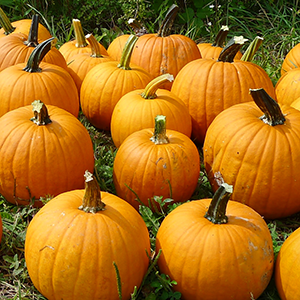
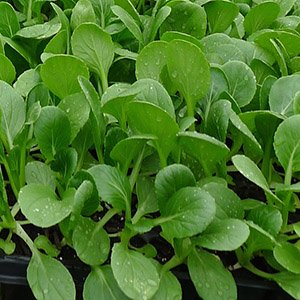
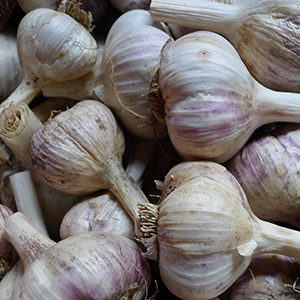

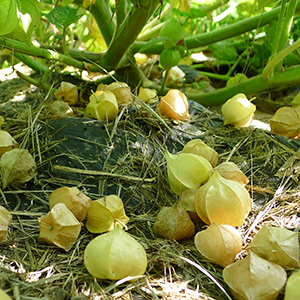
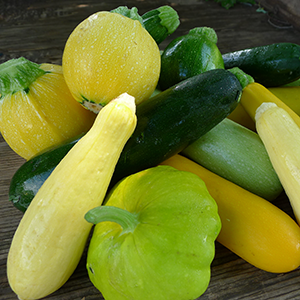
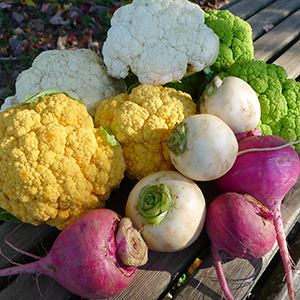



Herb Preservation Methods
Many of the farm's herbs are at their best for only a few weeks of the season. In order to enjoy them all year round, preserve them. Herbs can be dried or frozen—try the different methods and use those you find the most convenient and easy for you. Following are some storing/preserving methods....
Storing / Preserving:
Freezing Herbs
Method 1: Harvest the freshest, heathiest leaves. Wash and pat dry with paper towels. Spread the individual leaves on a small tray or cookie sheet. Freezing the leaves flat and individually will prevent them from freezing together into a brick. Cover and place the tray of leaves into the freezer. When frozen solid, place in airtight containers and return to the freezer. Once frozen individually, the leaves will not meld together.
Method 2: Harvest the freshest, heathiest leaves. Wash and pat dry with paper towels. Stuff 2-3 individual leaves in ice cube trays. Pack them in so that at least half the cube is herb leaves. Fill the tray with water. Make sure the leaves are down into the water, as best you can, and place in the freezer. Once the ice cubes are frozen, remove from the tray and store in zip closure bags. When ready to use, toss the whole ice cube into your favorite stew or dish.
Drying Herbs
Air drying herbs is not only the easiest and least expensive way to dry fresh herbs, this slow drying process also doesn't deplete the herbs of their oils. This process works best with herbs that don't have a high moisture content, like dill, marjoram, oregano, rosemary, and thyme. Use a microwave or oven to dry herbs only as a last resort. These actually cook the herbs to a degree, diminishing the oil content and flavor.
Cut healthy branches from herb plants. Remove any dry or diseased leaves. Shake gently to remove insects. If necessary, rinse with cool water and pat well dry with paper towels. Wet herbs will mold and rot. Remove the lower leaves along the bottom inch or so of the branch. Bundle 4 - 6 branches together and tie as a bunch. You can use string or a rubber band. The bundles will shrink as they dry and the rubber band will loosen, so check periodically that the bundle is not slipping.
Cut healthy branches from herb plants. Remove any dry or diseased leaves. Shake gently to remove insects. If necessary, rinse with cool water and pat well dry with paper towels. Wet herbs will mold and rot. Remove the lower leaves along the bottom inch or so of the branch. Bundle 4 - 6 branches together and tie as a bunch. You can use string or a rubber band. The bundles will shrink as they dry and the rubber band will loosen, so check periodically that the bundle is not slipping.
Make small bundles if you are trying to dry herbs with high water content. Punch or cut several holes in a paper bag. Label the bag with the name of the herb you are drying. Place the herb bundle upside down into the bag. Gather the ends of the bag around the bundle and tie closed. Make sure the herbs are not crowded inside the bag. Hang the bag upside down in a warm, airy room. Check in about two weeks to see how things are progressing. Keep checking weekly until your herbs are dry and ready to store.
Microwave drying is a quick and easy method to dry small amounts of herbs. Lay a single layer of clean, dry leaves between dry paper towels and place them in the microwave for 1 to 2 minutes on high power. Drying will vary with the moisture content of the herb and the wattage of the microwave oven. Let the leaves cool. If they are not brittle, reheat for 30 seconds and retest. Repeat as needed. Thick leaved herbs may need to be air dried for several days before microwaving.
Conventional ovens can also be used to dry herbs. Spread the herbs on cookie sheets and dry at the lowest temperature setting possible.
Storing Dried Herbs
Store dried herbs in tightly closed containers. Zip lock bags or canning jars work well. Be sure to label with date and contents. Your herbs will retain more flavor if you store the leaves whole and crush them when you are ready to use them. Discard any dried herbs that show the slightest sign of mold. Place containers in a cool, dry place away from sunlight. Dried herbs are best used within a year. As your herbs lose their color, they are also losing their flavor. Use about 1 teaspoon crumbled dried leaves in place of a tablespoon of fresh.


